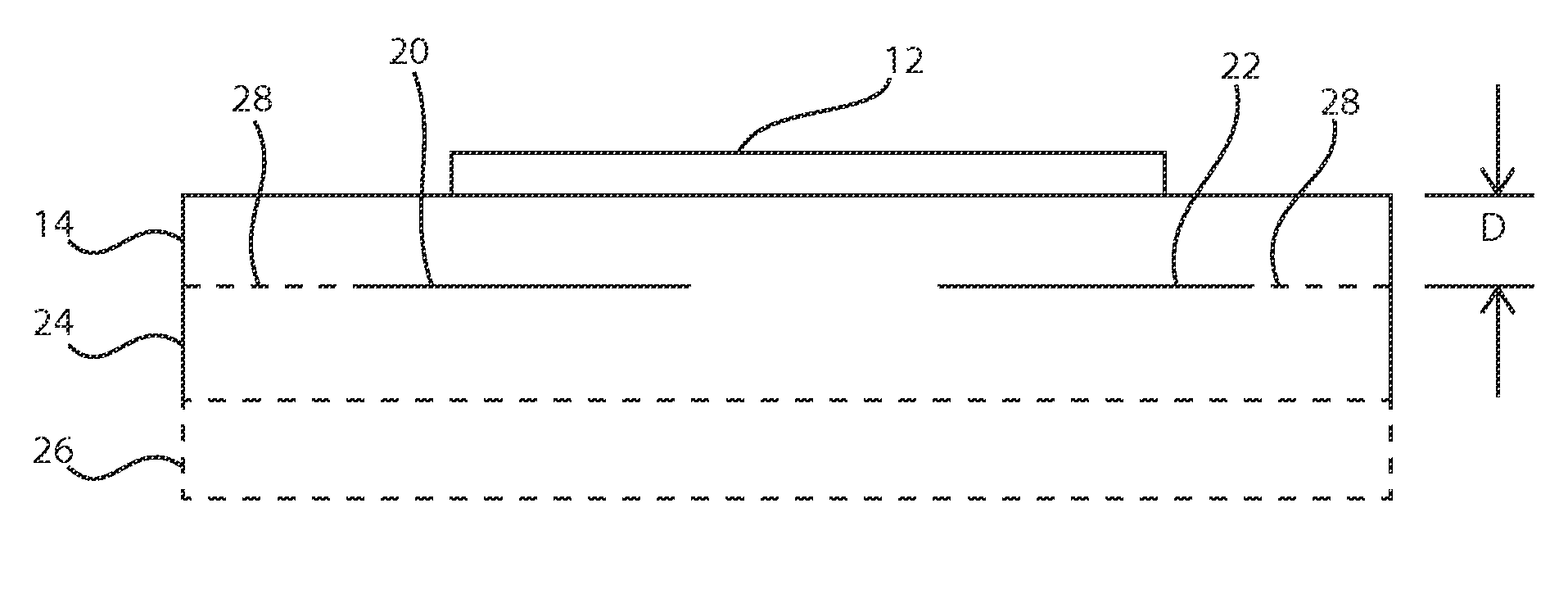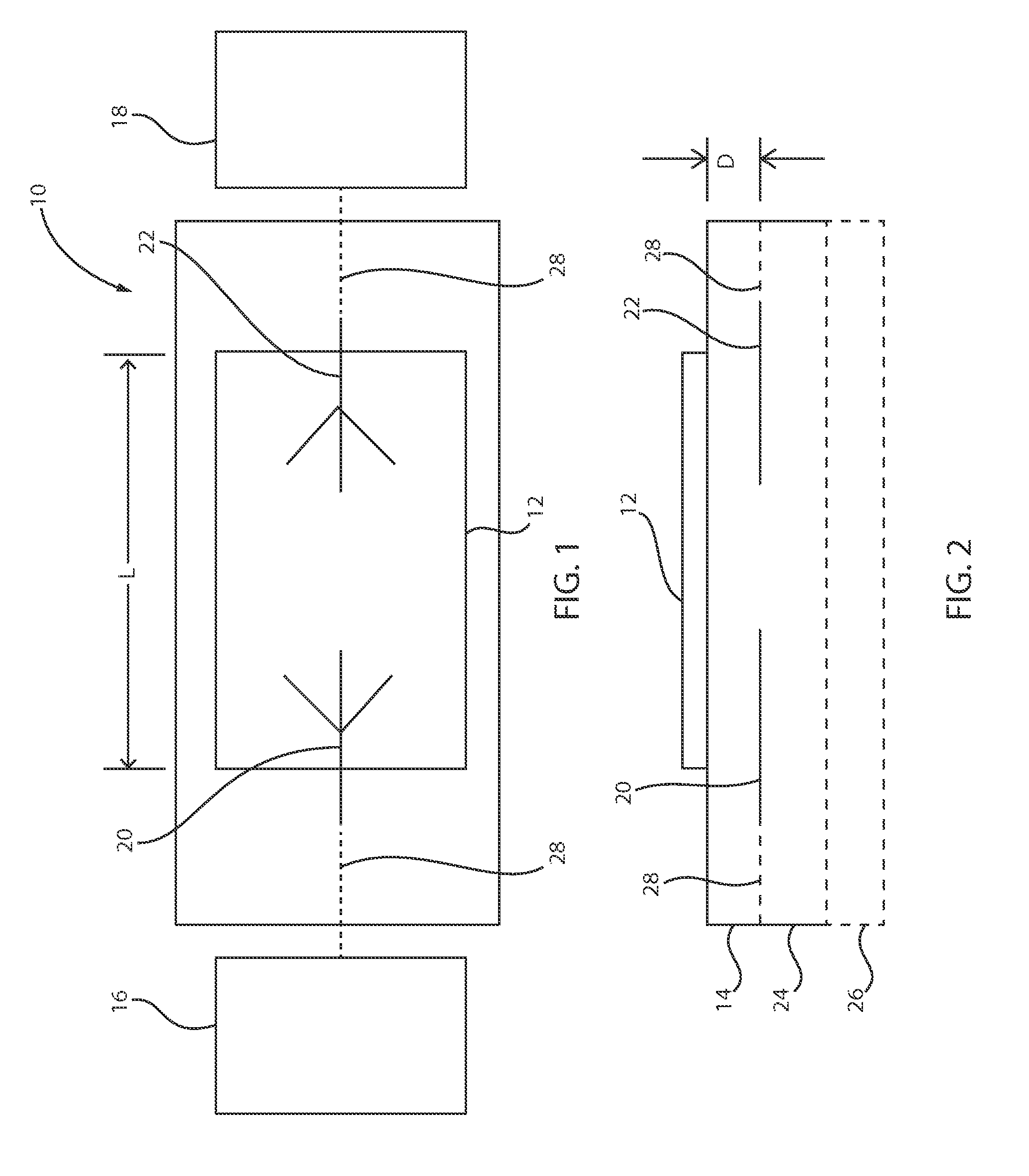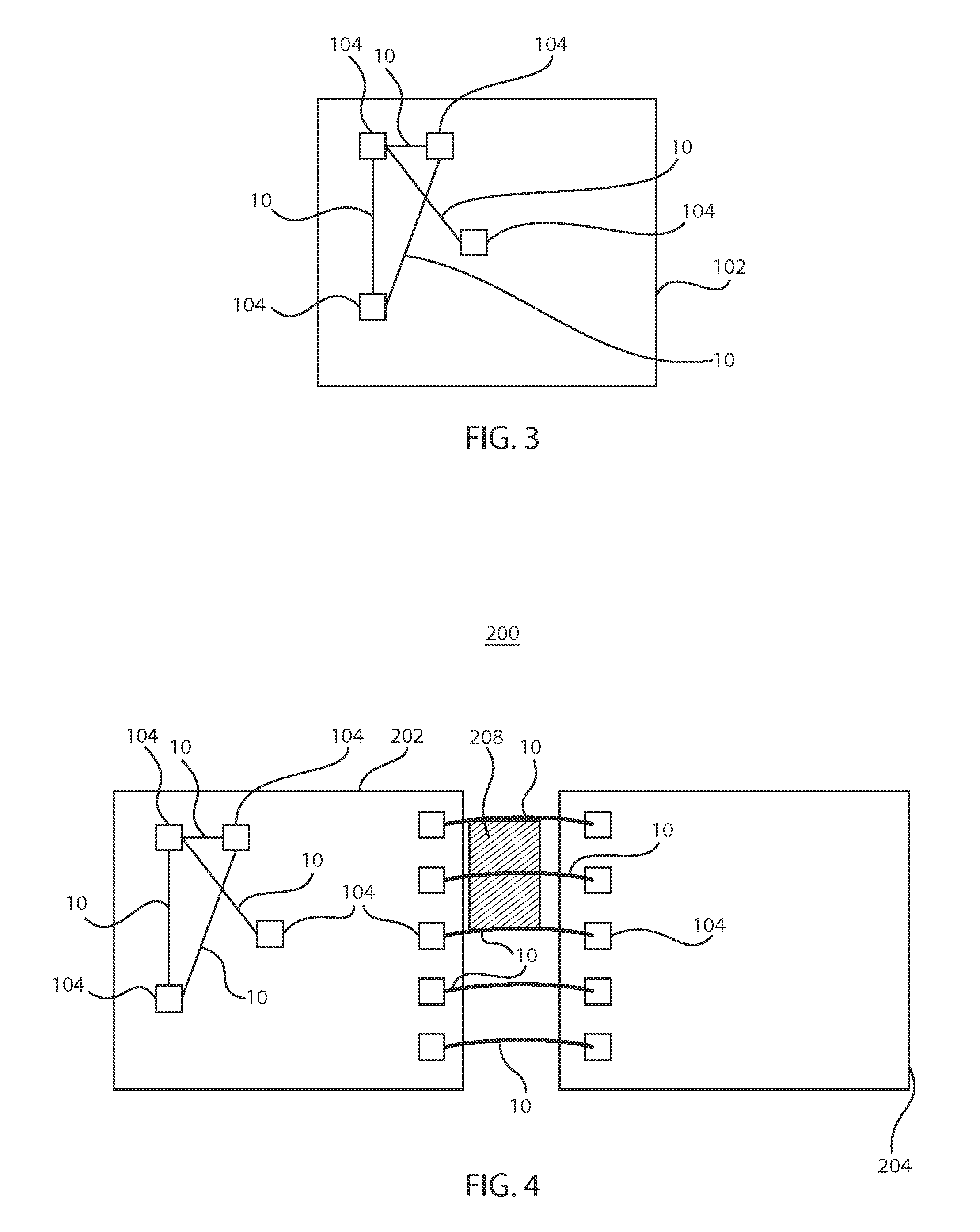Graphene plasmonic communication link
a graphene plasmonic and communication link technology, applied in the field of communication links, can solve the problems of weak damping of ac current in metal wires, limiting the use of communication methods relying on electrical transport, and deteriorating the overall performance of the communication between the different signals
- Summary
- Abstract
- Description
- Claims
- Application Information
AI Technical Summary
Benefits of technology
Problems solved by technology
Method used
Image
Examples
Embodiment Construction
[0019]In accordance with the present principles, a plasmon-based communication link is provided that overcomes the limitations of the prior art. The plasmon-based communication link includes a non-radiative, plasmon-mediated signal transport mechanism that neither relies on electrical transport nor on far-field radiation electromagnetic waves. The plasmon-mediated communication channel permits signal transmission at Terahertz frequencies. The plasmon-based communication link as described herein is particularly useful in intra-chip and inter-chip communications, although the present principles are applicable to any communication link or system.
[0020]In one example, a layer (or few layers) of graphene form a mono-atomic carbon layer, for plasmon-mediated inter-systems communications. Plasmons are collective excitations of charge carriers in graphene, and are excited at one end of the graphene-based plasmonic link by a plasmon launcher (e.g., a plasmon coupler or plasmon antenna) attac...
PUM
 Login to View More
Login to View More Abstract
Description
Claims
Application Information
 Login to View More
Login to View More - R&D
- Intellectual Property
- Life Sciences
- Materials
- Tech Scout
- Unparalleled Data Quality
- Higher Quality Content
- 60% Fewer Hallucinations
Browse by: Latest US Patents, China's latest patents, Technical Efficacy Thesaurus, Application Domain, Technology Topic, Popular Technical Reports.
© 2025 PatSnap. All rights reserved.Legal|Privacy policy|Modern Slavery Act Transparency Statement|Sitemap|About US| Contact US: help@patsnap.com



